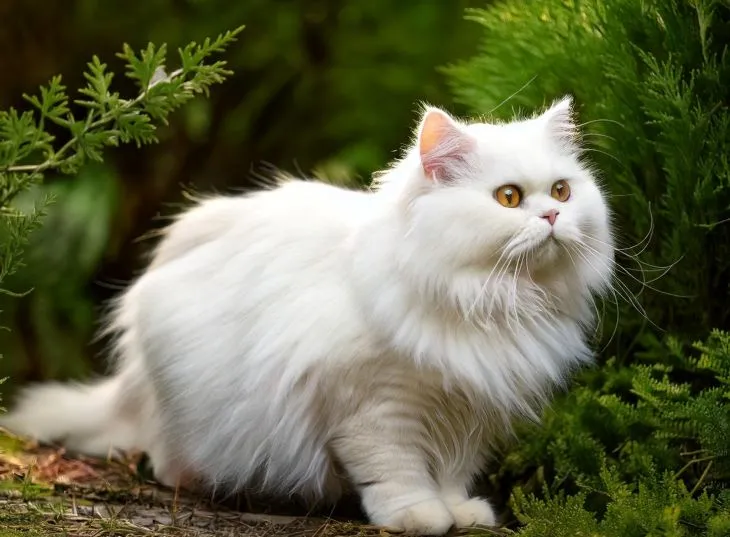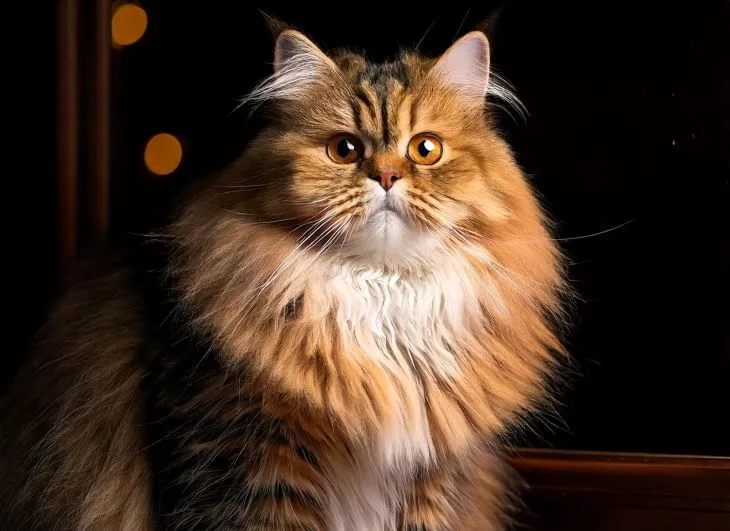Exotic Longhair Cats: Temperament, Personality & Complete Care Guide
By: Dorris Abraham

The information in this article is intended to educate cat parents and is not a substitute for veterinary guidance. In case of any concerns about your cat’s health, please talk with your veterinarian.
Known as the “lazy person’s Persian,” Exotic Longhair breed combine the allure of Persian aesthetics with more manageable grooming needs. This beautiful breed, developed through crossing Persian and American Shorthair cats, has won the hearts of many with its easygoing personality, striking looks, and manageable grooming requirements.
Whether you’re a longtime cat enthusiast or a new pet owner, here’s everything you need to know about the Exotic Longhair’s unique features, personality, care needs, and health requirements to ensure they thrive in your home.
History And Origins
The Exotic Longhair breed emerged as a variation of the Exotic Shorthair, which originated in the 1960s when breeders began crossing Persian and American Shorthair cats. These crossings aimed to create a short-haired Persian, but some kittens were born with longer coats. This long-haired variant was soon embraced as its own beloved breed, recognized today for its beauty and calm demeanor. This cat’s rich heritage combines the best traits of both breeds, delivering the Persian’s signature sweet expression with a slightly more robust, easy-to-care-for coat.
Unique Physical Characteristics

The Exotic Longhair is often compared to a teddy bear due to its round face, plush coat, and expressive eyes. These cats bring elegance and charm to any household with their distinct appearance.
Facial Features
The Exotic Longhair cat displays many signature traits of Persian cats, such as:
- Head and Eyes: Large, round eyes are set into a round, broad head, giving them a perpetual look of innocence.
- Nose and Cheeks: A short, snub nose and full cheeks add to their soft, cuddly appearance.
- Ears: Small, rounded ears sit wide apart on the head, contributing to their overall plush look.
Body Structure
These cats have a sturdy and well-proportioned build:
- Size and Build: Exotic Longhairs are medium to large in size with a sturdy build.
- Legs and Tail: Their legs are short but strong, supporting a compact body. A short, thick tail completes their balanced physique. Their legs are short but strong, supporting a compact body. A short, thick tail completes their balanced physique.
- Weight and Size: Adult Exotic Longhairs typically weigh between 10 to 20 pounds.
Click to know: Why does my cat snore?
Coat And Colors
The Exotic Longhair’s coat is its most eye-catching feature, combining a soft texture with moderate length. Their coat comes in an array of colors and patterns, including solid, tabby, calico, and pointed with the following features:
- Moderately long compared to Persian cats.
- Less prone to matting
Temperament And Personality: A Gentle Companion
The Exotic Longhair’s personality is as endearing as its appearance. Known for their calm and friendly disposition, these cats are ideal family pets and adapt well to quiet homes and apartment living.
Affectionate And Social
Exotic Longhairs are known for their loyal, affectionate nature, which makes them wonderful companions. They form strong bonds with family members, including children and other pets. These cats often display their affection by snuggling and seeking physical closeness, but they are also independent enough to handle brief periods alone.
Click to know: Why does my cat sleep between my legs?
Playful Yet Mellow
Although Exotic Longhairs enjoy interactive play sessions, they are not as active as some other breeds. They prefer a mix of relaxation and gentle play:
- Interactive Toys: Light games and puzzle toys keep them mentally stimulated.
- Lounging: A favorite spot by a window or a sunny area is perfect for their laid-back lounging habits.
Care Requirements
While Exotic Longhairs require less grooming than Persians, they still need regular attention to maintain their coat and overall health. Here’s a complete guide to their care requirements:
Grooming
Due to their long, dense fur, Exotic Longhairs benefit from consistent grooming:
- Brushing: Brush their coat two to three times a week to prevent matting and reduce shedding.
- Bathing: Occasional baths every 4–6 weeks help keep their fur fresh and minimize dander.
- Facial Care: Due to their flat face, they may require gentle cleaning around their eyes to avoid tear stains.
- Nail Trimming and Ear Cleaning: Regular nail trimming and ear cleaning are recommended to keep them comfortable.
Health Considerations
As a brachycephalic (flat-faced) breed, Exotic Longhairs can be prone to certain health issues. Here are the most common concerns to monitor:
- Respiratory Issues: Their shorter nasal passages can make breathing slightly more difficult, especially in hot weather.
- Polycystic Kidney Disease (PKD): This hereditary condition is prevalent in Persian-related breeds, so regular vet check-ups are crucial.
- Eye and Dental Care: Flat faces can lead to tear staining and dental problems, so periodic cleaning and dental care are beneficial.
Click for an interesting comparison between: Korat vs Russian Blue
Living Environment: Ideal For Indoor Living
Exotic Longhairs are best suited to an indoor lifestyle, where they can stay safe and comfortable. Their adaptable nature allows them to thrive in various environments, from small apartments to larger homes.
- Indoor Safety: They do best indoors, where temperature, cleanliness, and safety can be controlled.
- Comfortable Resting Spots: Provide cozy beds and soft blankets to enhance their comfort.
- Cat Trees and Scratching Posts: These cats enjoy occasional climbing and scratching, so having cat trees or scratching posts is recommended.
Exercise And Mental Stimulation
Despite their relaxed nature, Exotic Longhairs still require daily stimulation to prevent boredom. Engaging them in simple activities ensures they stay healthy and happy.
- Puzzle Toys: Use toys that challenge their problem-solving skills.
- Interactive Play: A laser pointer or feather toy can bring out their playful side.
- Window Watching: Set up a window perch to satisfy their curiosity and love for bird-watching.
Health And Longevity
With proper care, Exotic Longhairs have an average lifespan of 13–15 years, though some may live even longer. Here’s how to help your Exotic Longhair stay healthy throughout its life:
- Regular Vet Visits: Routine veterinary care, including vaccinations and dental cleanings, is essential.
- Balanced Diet: A high-quality, balanced diet supports their overall well-being and helps manage weight.
- Stress-Free Environment: These cats prefer calm, stable surroundings, as they can be sensitive to stress.
Frequently Asked Questions
Final Thoughts
Exotic Longhair cats are gentle, affectionate companions that offer the elegance of Persian cats without extensive grooming needs. Their loyal nature, coupled with their adaptable personality, makes them an ideal choice for families or individuals seeking a beautiful, low-maintenance pet. With regular grooming, proper care, and a nurturing environment, these delightful cats can bring years of joy to any household.
Whether you’re a seasoned cat owner or new to feline companionship, the Exotic Longhair is sure to capture your heart with its endearing personality and stunning appearance.

About the Author
Dorris Abraham
Dorris, a skilled writer with a degree in English, combines her lifelong love for cats with years of expertise in feline behavior and care. A proud pet parent and passionate advocate for pedigreed and fluffy breeds, she creates authoritative, engaging blogs that inform and inspire cat lovers everywhere.
